|
Threading Time was the title of the SIGGRAPH2005 art gallery, which exhibited work that uniquely traces pathways weaving through the past, present, and future -- thus collapsing time, and along with it, space. The exhibition showcased six invited and 52 juried artists, all presenting a small body of work consisting of three to five pieces each. This depth, according to the exhibition curator Linda Lauro-Lazin, helped the work "trace threads through time and space" and offered an opportunity to uncover artistic interpretations of space and time in a cohesive and conceivably profound way. If the art reveals the thread, then time and space are the weave and weft created by this thread, the resulting fabric being the exhibition. In fact, the revelations that the unified and interrelated fibers can uncover are reminiscent of the way Einstein's notion of spacetime helped us rethink the meaning of both space and time. His theory of special relativity showed that some things are relative, such as distances in space, velocities, and durations of time [1] but that spacetime is absolute.
The work in Threading Time examined time and -- inadvertently or directly -- space along with it, but embodied the absolute end result of expression by each artist. Much like Einstein's theory of relativity, the work challenged the viewer's awareness of time and space. The digital medium works like Einstein's equations in that it can help us see the ubiquitous realities of our universe, and in the case of this exhibition, the bending of artistic spacetime. The work in the show did not address digital tools; rather, it was the digital medium itself that made visible the warping and in some cases, the collapsing, of metaphoric and even literal space and time. Narratives, biological appropriation, body and identity, body memory, generative work, and social networks were but a few of the sub-themes that surfaced under the umbrella of spacetime.
Some artists, in particular, presented work that collapsed time within the space of the digital medium. Heather Elliott-Famularo's And These are the Names of our Daughters, Camille Utterback's External Measures: Untitled V, and Kate Pemberton's Tracert compress time using thread-like links that weave a time tapestry.
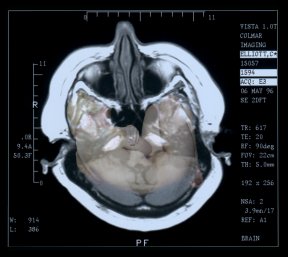 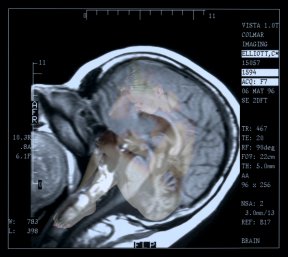
Figs. 1, 2: E. Elliott-Famularo, left: ACQ: E3 (and me); right: ACQ: F7 (and me)
Elliott-Famularo's digital light boxes connect the past and the present, and muse on the future. Within the space of the computer, she combines her own nude and fetal-like body images with her mother's MRI brain scans. [Fig. 1, 2] The MRI scans were taken when her mother became terminally ill with breast cancer that had metastasized. Elliott-Famularo's body becomes a literal memory in her mother's brain, thus filling the memories that her mother lost. The artist was once her mother's baby, but through the course of the illness, became the mother figure to her increasingly infant-like mom. This inversion becomes visible through the compressed imagery that links time in the form of memories from the past with forms of the now. The links are furthered by an eerie prediction of the possibilities that genetics might hold for the artist in the future. The space of the computer helps Elliott-Famularo to show the genetic associations she shares with her mother through body memory. Time is encapsulated in these connections, moving as far back as it does forward, recalling not only the events of the past, but using them to look forward. Thus the space and time represented in the images bend in relation to the digital realm in which they are compressed, equaling the constant of artistic spacetime and personal expression.
Fig. 3: Camille Utterback, Untitled 5 (External Measures Series), 2004 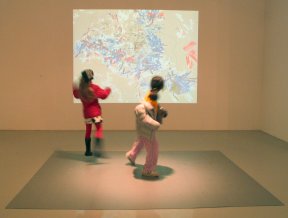 Camille Utterback's generative installation External Measures: Untitled V [Fig. 3] shows another way in which traces of the past become current in the now, while predicting the future. As Einstein showed at the beginning of the 20th century, time and space are entwined and speed is a combination of the two that totals the absolute speed of light. If something is not moving through space, then 100 percent of its movement unfolds through time. Once an entity moves through space, it moves slower through time. If an object could move at the speed of light, then passage of time for that object would cease. This relationship is prevalent in External Measures: Untitled V. The abstract 'drawings' generated by Utterback's interactive installation are paths that participants instigate as they move through the space of her work over time. Initially, the position of marks in space, their velocity, and their mere existence in the projection depend on the presence of people and their movement. Some responses of the system are immediate, while other lines and splotches evolve over time, based on how people had moved through the space. Camille Utterback's generative installation External Measures: Untitled V [Fig. 3] shows another way in which traces of the past become current in the now, while predicting the future. As Einstein showed at the beginning of the 20th century, time and space are entwined and speed is a combination of the two that totals the absolute speed of light. If something is not moving through space, then 100 percent of its movement unfolds through time. Once an entity moves through space, it moves slower through time. If an object could move at the speed of light, then passage of time for that object would cease. This relationship is prevalent in External Measures: Untitled V. The abstract 'drawings' generated by Utterback's interactive installation are paths that participants instigate as they move through the space of her work over time. Initially, the position of marks in space, their velocity, and their mere existence in the projection depend on the presence of people and their movement. Some responses of the system are immediate, while other lines and splotches evolve over time, based on how people had moved through the space.
Even if the mapping in Utterback's work is not one to one, the movement through space over a period of time represents an association between time and space reminiscent of spacetime. Marks that one participant leaves may be pushed around by the next participant. The displaced marks later try to return to their original state, thus creating a blur of paint as they trace the past in the present time, and -- with their movement -- predict the future. As with Elliott-Famularo's work, there is a sense of embedded memory. Rather than being body memory, the memory here is embedded in marks created by humans, thus connecting them by washes of digital paint representing a passage of time. The moments in time portrayed in the work are not placed on a linear continuum; instead, the path that the work sketches back changes on the basis of human movement in the present.
Fig. 4: Camille Utterback, Untitled 5 (External Measures Series), screen detail 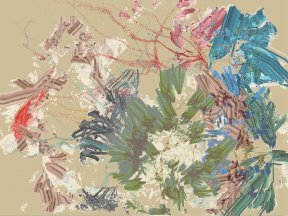 As relativity, stillness represents lack of movement in space; nevertheless, there still is movement. In the case of relativity, a state of being at rest in space produces one hundred percent of the movement through time. A participant's stillness in Utterback's work produces motion in digital time and space, a flood of marks that erase old ones, but at the same time, nod to the past. [Fig. 4] As relativity, stillness represents lack of movement in space; nevertheless, there still is movement. In the case of relativity, a state of being at rest in space produces one hundred percent of the movement through time. A participant's stillness in Utterback's work produces motion in digital time and space, a flood of marks that erase old ones, but at the same time, nod to the past. [Fig. 4]
The kinesthetic nature of the work reminds us of our present body, but hints at where it might have been and might yet go. It tunes us in to moments that exist as we experience them, but are gone seconds later, leaving only hints and fading lines. As with quantum mechanics, things in the world can be predicted, but only with a level of probability. In other words, what has happened and what will happen is based on possibility. The universe exists as we know it, but only as we observe it. [2] The visual threads created by Utterback's work are manifestations of the connections between space and time, and -- through the lines -- we see only predictions of the past and future.
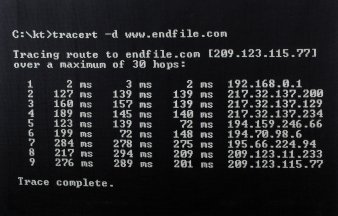 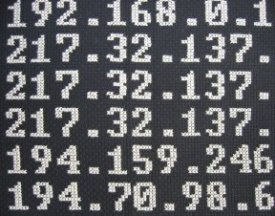
Figs. 5, 6: Kate Pemberton,
Tracert (left), detail (right)
While Utterback's metaphorical time threads are projected splashes of digital paint and Elliott-Famularo's are the digital juxtapositions of body imagery and memory, Kate Pemberton's time threads in Tracert are literal, a cross-stitch representation of movement through digital time and space. [Figs. 5, 6]
Tracert is a stitching -- in grey embroidery silk -- of the DOS command "tracert," which maps out and times the flow of network packets through digital space from one point to another. The packets move through space in relation to time, bending in accord with network traffic. Special relativity states that spacetime is absolute. However, spacetime warps on the way, and this bending is a materialization of a gravitational pull or acceleration. [3] In the digital realm, spacetime bends with the "tracert" command and the available pathways in the network. Indicative of pixels. Pemberton's cross-stitch is a physical manifestation of the curving of digital spacetime.
Fig. 7: Lee Arnold, Here 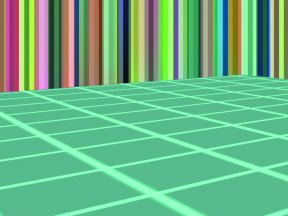 The other artists in the exhibition also invoke ideas reminiscent of the time and space relationship outlined by Einstein. Lee Arnold and Ansen Seale visualize time in reference to the space of landscape; LiQin Tan compresses analog and digital to form a new kind of space; and Anna Ursyn and Peter Horvath bend space and time by combing segments of both, using the digital universe.
The other artists in the exhibition also invoke ideas reminiscent of the time and space relationship outlined by Einstein. Lee Arnold and Ansen Seale visualize time in reference to the space of landscape; LiQin Tan compresses analog and digital to form a new kind of space; and Anna Ursyn and Peter Horvath bend space and time by combing segments of both, using the digital universe.
Lee Arnold's Here is a screen-based interactive program that relates movement and stillness both in time and space. [Fig. 7] The viewer watches a static painting of a synthetic landscape that slowly, over time, breaks into its elemental forms. What is static in space eventually moves, but not as we expect. It reminds us that, in accordance with relativity, physical movement, even when we don't see any, exists in another dimension. In the case of relativity, the subsequent movement is through time; in Here, the movement unfolds in a new manufactured space, perhaps imagined as an alternate dimension.
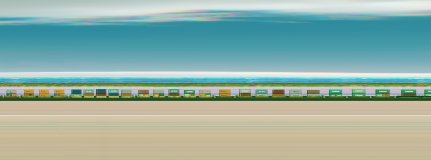
Fig. 8: Ansen Seale, Evergreen
Fig. 9: Ansen Seale, Evergreen, detail 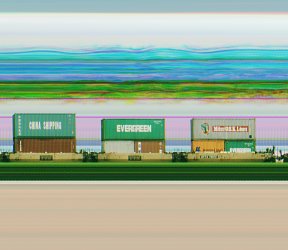 Like Arnold, Ansen Seale maps time in landscape, but rather than creating a digital space, he uses our physical world as a referent. [Fig. 8, 9] His work Evergreen is an image -- produced by a camera he built -- that digitally scans the world through a moving slit. In other words, rather than capturing an instant of time in space like traditional photography, he is visualizing time over space. In effect, he is swapping the time and space dimensions. What is blurred in the image was, at the time of capture, static in space and what is static in the image was moving in space. In his own way, Seale is visualizing relativity. Interestingly, he connects two otherwise conflicting areas of science, relativity and quantum mechanics by representing Einstein's relativity and, at the same time, hinting at quantum mechanics. As I pointed out earlier, quantum mechanics states that certain ways in which particles act are indeterminate until we observe the behavior. The realities of Seale's images do not exist until his camera observes them, as unexpected things appear and are gone with a sense of uncertainty. In science, the mathematics between relativity and quantum mechanics break down, but in Seale's work, they co-mingle. Like Arnold, Ansen Seale maps time in landscape, but rather than creating a digital space, he uses our physical world as a referent. [Fig. 8, 9] His work Evergreen is an image -- produced by a camera he built -- that digitally scans the world through a moving slit. In other words, rather than capturing an instant of time in space like traditional photography, he is visualizing time over space. In effect, he is swapping the time and space dimensions. What is blurred in the image was, at the time of capture, static in space and what is static in the image was moving in space. In his own way, Seale is visualizing relativity. Interestingly, he connects two otherwise conflicting areas of science, relativity and quantum mechanics by representing Einstein's relativity and, at the same time, hinting at quantum mechanics. As I pointed out earlier, quantum mechanics states that certain ways in which particles act are indeterminate until we observe the behavior. The realities of Seale's images do not exist until his camera observes them, as unexpected things appear and are gone with a sense of uncertainty. In science, the mathematics between relativity and quantum mechanics break down, but in Seale's work, they co-mingle.
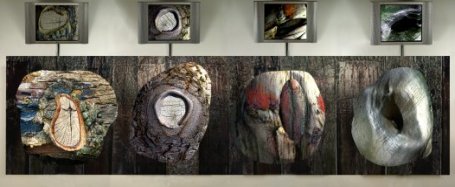 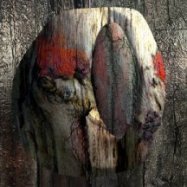
Figs. 10, 11: LiQin Tan, BurlNuts + 4 (left), detail (right)
LiQin Tan compresses time by using digital space similar to the way in which Elliott-Famularo does. [Fig. 10, 11] With BurlNuts + 4, Tan not only converges the analog with the digital world, but marries ancient and digital technologies and manifests them in one final visual space, taking representations of primitive time and merging them with the contemporary. The work is a display of digital rawhide prints, digital rawhide projections, digital woodprints, and animation on flatbed monitors. Combining burl, which means wood, with the four elements, water, metal, fire, and earth, Tan represents the five natural elements, using digital space to create a digital nature. He bends time by bringing the prehistoric to the present and bends space by combining the digital with the organic to make a new dimension in both the digital realm and in nature.
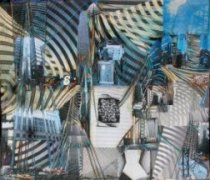 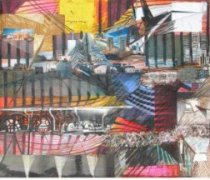 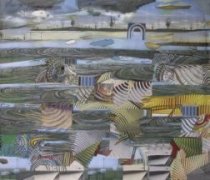
Figs. 12, 13, 14: Anna Ursyn,
Grammar of the City (left), Yellow Pages (center), Fragile Balance (right)
Two artists in the exhibition, Anna Ursyn and Peter Horvath, created new digital spaces from slices of another time and place. Anna Ursyn's Yellow Pages, Fragile Balance, and Grammar of the City take pieces of seemingly unrelated space and compress them to represent one moment in time. [Fig. 12, 13, 14] Yellow Pages creates a new transitional space, one that encapsulates the rural and urban, consumption and production, and essentials and ornamentation. In bending polar, opposite spaces together as one, Ursyn visualizes the time of transition between the two. In Fragile Balance seemingly opposing forces such as volcanic activity, rainforests, and windswept slopes come together to create a necessary equilibrium that sustains nature. The stability of disparate energies in nature works in a similar way as movement in time and space operates on equilibrium. Along with Grammar of the City, Yellow Pages and Fragile Balance relate multiple yet seemingly different layers in time in order to create a new cohesive space. As in the case of artists such as Pemberton, the digital tool serves to bend space and time resulting in a visual cross-section of an unseen reality.
Fig. 15: Peter Horvath, Intervals 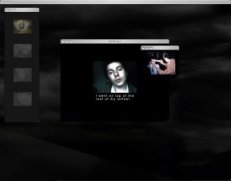 Peter Horvath's Intervals is a beautiful and contemplative web piece that coalesces narratives and sub-narratives of characters in an online space. [Fig. 15] The juxtaposition of pop-up windows forces subliminal yet strong relationships between the players within the space and the viewer navigating it. Through the unexpected stories that pop up as "intervals" -- or periods of time that contain information about a character -- the interval itself becomes filled with content rather than being the pause and emptiness that the term implies. The work reveals the intimate identity of the players as it shows their fears, vulnerabilities, and loss of innocence. Time takes on a new meaning as it easily moves forward and back, compressing history through journals, photographs, and the like, thus making a prediction for a future time both within and outside of the space and grammar of the Web. Peter Horvath's Intervals is a beautiful and contemplative web piece that coalesces narratives and sub-narratives of characters in an online space. [Fig. 15] The juxtaposition of pop-up windows forces subliminal yet strong relationships between the players within the space and the viewer navigating it. Through the unexpected stories that pop up as "intervals" -- or periods of time that contain information about a character -- the interval itself becomes filled with content rather than being the pause and emptiness that the term implies. The work reveals the intimate identity of the players as it shows their fears, vulnerabilities, and loss of innocence. Time takes on a new meaning as it easily moves forward and back, compressing history through journals, photographs, and the like, thus making a prediction for a future time both within and outside of the space and grammar of the Web.
Fig. 16: David Crawford, Stop Motion Studies: Series 13 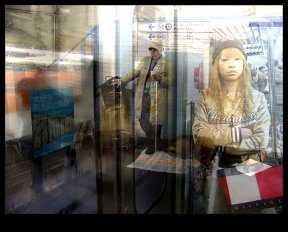 Even if not intended by the artists, the relationship between time and space surfaced -- at least on a metaphorical level -- as a thread within the art of the SIGGRAPH2005 exhibition. There were many artists, such as David Crawford, who pulled moments of time together to relate otherwise distant cultures. His web-based video Stop Motion Studies: Series 13 [Fig. 16] stitches together moments in time captured in subways of distant cities and creates a space that forces unexpected relationships between cultures and people. Ken Huff creates stunning organic objects that look suspiciously familiar but are in fact things we have never seen. They suggest a wholly different space with a unique scale of time [Fig. 17, 18] Works such as these, along with the rest of the art in the exhibition, weave an artistic spacetime tapestry with novel twists made possible by digital means. Threading Time serves as yet another example of how the digital medium not only facilitates but also helps materialize ideas, such as the space / time relationship, heretofore somewhat less visible. Similar to the theory of relativity, the exhibition thread could help viewers to see space and time relationships that are not necessarily intuitive, but nonetheless omnipresent. Even if not intended by the artists, the relationship between time and space surfaced -- at least on a metaphorical level -- as a thread within the art of the SIGGRAPH2005 exhibition. There were many artists, such as David Crawford, who pulled moments of time together to relate otherwise distant cultures. His web-based video Stop Motion Studies: Series 13 [Fig. 16] stitches together moments in time captured in subways of distant cities and creates a space that forces unexpected relationships between cultures and people. Ken Huff creates stunning organic objects that look suspiciously familiar but are in fact things we have never seen. They suggest a wholly different space with a unique scale of time [Fig. 17, 18] Works such as these, along with the rest of the art in the exhibition, weave an artistic spacetime tapestry with novel twists made possible by digital means. Threading Time serves as yet another example of how the digital medium not only facilitates but also helps materialize ideas, such as the space / time relationship, heretofore somewhat less visible. Similar to the theory of relativity, the exhibition thread could help viewers to see space and time relationships that are not necessarily intuitive, but nonetheless omnipresent.
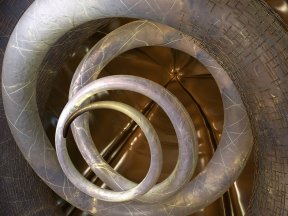 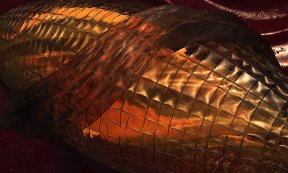
Figs. 17, 18: Kenneth A. Huff, 2004.4 (left), 2004.5 (right)
References
[1] B. Green, The fabric of the cosmos (Alfred A. Knopf: New York, 2004)
[2] Ibid.
[3] Ibid.
|

